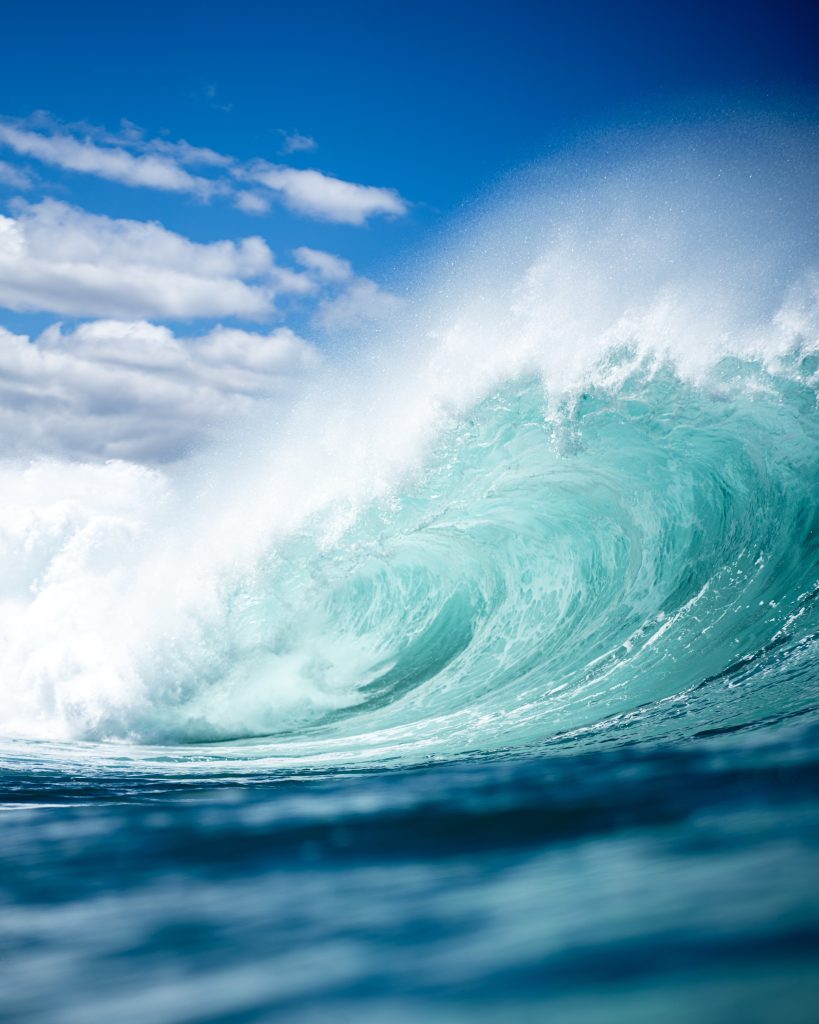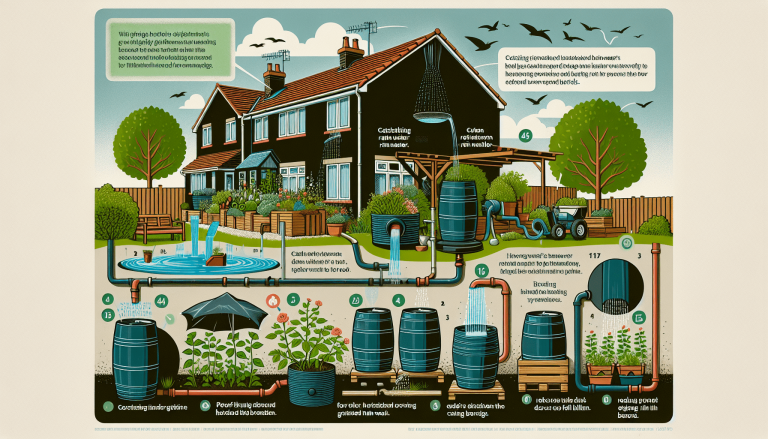Whether you’re an experienced gardener or just starting out, one question that often comes to mind is how often should you water your garden in the UK climate? With the unpredictable weather and varying temperatures, it can be challenging to determine the ideal watering schedule. In this article, we will discuss some key factors to consider and provide helpful tips to ensure your garden thrives throughout the year. So, if you’re ready to give your plants the hydration they need without over or under-watering, read on!
Table of Contents
ToggleFactors to Consider
Soil Type
One of the first factors to consider when determining how often you should water your garden is the type of soil you have. Soil type plays a crucial role in water retention and drainage, and different soil types require different watering frequencies.
Clay Soil
If you have clay soil in your garden, you’ll need to be mindful of its high water retention capabilities. Clay soil tends to hold onto water for longer periods, making it more prone to waterlogged conditions. This can lead to poor root health and plant stress. To avoid overwatering clay soil, watering should be done in moderation and only when the soil has dried out.
Sandy Soil
On the other end of the spectrum, sandy soil drains water quickly and doesn’t retain moisture well. This means that you’ll need to water more frequently to compensate for the rapid water loss. Keep an eye on sandy soil and ensure that it doesn’t become dry or parched, as it can impact the health of your plants.
Loamy Soil
Loamy soil strikes a balance between clay and sandy soil. It has good water retention capabilities while also providing adequate drainage. Loamy soil is considered ideal for most plants as it allows for uniform water distribution and proper root growth. With loamy soil, you’ll want to maintain consistent moisture levels by watering when the top inch of soil feels dry.
Plant Type
Different plants have varying water requirements based on their species, growth stage, and maturity. To determine how often to water your garden, it’s essential to understand the watering needs of the specific plant types you have.
Vegetables
Vegetables generally require consistent moisture to thrive. As a rule of thumb, vegetables should be watered when the top inch of soil feels dry. Remember that younger plants typically need more frequent watering compared to mature ones. Observe your vegetable garden closely and adjust your watering schedule accordingly.
Flowers
Flowering plants can have diverse water requirements. Some flowers, like roses, prefer moist soil, while others, such as cacti and succulents, thrive in drier conditions. Consult plant-specific guides to determine the watering needs of your flowering plants. In general, water flowers when the soil feels dry, ensuring that you provide enough moisture for healthy growth and blooming.
Shrubs
Shrubs, like trees, develop deep root systems that allow them to access water from deeper soil layers. However, young shrubs require more attention until their roots are well-established. Water shrubs deeply and infrequently to encourage deep root growth and minimize the risk of shallow root development.
Trees
Trees, especially newly planted ones, need regular watering until they establish their root systems. Deep watering once or twice a week promotes deep, extensive root growth and improves their overall resilience. Keep in mind that older, well-established trees usually require less frequent watering than younger ones.
Lawns
Lawns can consume a significant amount of water, especially during hot summer months. Water your lawn deeply and infrequently to encourage deep root growth and drought tolerance. Avoid frequent, shallow waterings, as they can lead to shallow root systems. Monitor your lawn closely and adjust watering based on weather conditions and the appearance of the grass.
Weather Conditions
The weather conditions in your area also play a vital role in determining the watering needs of your garden. Factors such as temperature, humidity, wind, and sunlight can significantly impact how often you should water your plants.
Heatwaves and Drought
During heatwaves and drought, plants lose moisture rapidly, and the soil can dry out quickly. Consequently, you’ll need to water more frequently to prevent your plants from becoming stressed or dehydrated. Consider watering early in the morning or late in the evening to minimize water loss due to evaporation.
Rainy Periods
During rainy periods, you can reduce the frequency of watering as the plants receive natural irrigation. However, it’s crucial to monitor how well the rainwater is penetrating the soil. If the rain seems insufficient or doesn’t reach the deeper root zone, supplement with additional watering as needed.
Windy Weather
Wind can increase water loss from the soil and plants through evaporation. During windy periods, plants may require more frequent watering to compensate for the increased water loss. Additionally, strong winds can cause plants to dry out faster, so be vigilant and adjust your watering schedule accordingly.
Time of Year
The time of year also affects the watering needs of your garden. As seasons change, so do the moisture requirements of plants.
Spring
In the spring, plants are emerging from their dormant state and entering a period of active growth. As temperatures rise and rainfall becomes more frequent, you may need to adjust your watering schedule accordingly. Monitor the soil moisture levels closely and water as necessary to support the growth of your plants.
Summer
Summer brings higher temperatures and increased evaporation rates. Watering requirements may intensify during this time, especially for plants in direct sunlight or containers, which tend to dry out quickly. Water deeply and early in the morning or late in the evening to minimize water loss due to evaporation.
Autumn
As the temperatures begin to cool down in autumn, plants generally require less frequent watering. However, continue monitoring the soil moisture levels and provide supplemental irrigation as needed. Proper hydration during this season will help plants prepare for the winter months ahead.
Winter
While plants typically require less water during winter due to reduced growth and evaporation rates, it’s important not to neglect them entirely. Monitor soil moisture and water when necessary, especially during dry spells. Keeping the root zone moist but not waterlogged will help protect plants from winter damage.
Determining Watering Frequency
Determining the right watering frequency can be a bit challenging, but there are several methods you can use to make an informed decision.
The Finger Test
One simple and effective way to check the moisture level of the soil is by using the finger test. Insert your finger into the soil up to the second knuckle. If the soil feels moist, as if it has just been watered, it’s likely that watering is not necessary yet. If the soil feels dry, it’s time to water. Be sure to check various spots in your garden, as soil moisture can vary.
Moisture Sensors
Moisture sensors are useful tools that measure the moisture level in the soil. These devices provide accurate readings and can help you understand when it’s time to water. Some sensors even connect to smart irrigation systems and can automatically adjust watering schedules based on real-time data.
Watering by Time of Day
The time of day you choose to water your garden can impact its overall health. Watering in the early morning allows moisture to penetrate the soil and be absorbed by the roots before the heat of the day increases evaporation rates. Avoid watering in the evening, as it can create prolonged moisture on the leaves, increasing the risk of fungal diseases.
Using Irrigation Systems
Irrigation systems, such as sprinklers or drip systems, can provide consistent and controlled watering. They distribute water evenly, ensuring that all plants receive adequate moisture. Additionally, programmable timers can be set to water during specific times of the day, making it easier to maintain a regular watering schedule.
Water Conservation Tips
Water conservation is not only environmentally friendly but also economical. By implementing these water conservation tips, you can reduce water usage in your garden while still keeping your plants healthy.
Mulching
Applying a layer of organic mulch to the soil surface helps conserve moisture by reducing evaporation. Mulch also acts as insulation, keeping the soil cooler during hot weather and preventing rapid moisture loss. Additionally, mulch helps suppress weed growth, reducing competition for water.
Collecting Rainwater
Harnessing rainwater is an excellent way to reduce your reliance on municipal water supplies. Install rain barrels or storage tanks to collect rainwater from roofs and gutters. This collected water can be used to irrigate your garden during dry periods, offering a sustainable solution for watering.
Avoiding Overwatering
Overwatering not only wastes water but can also harm plants. Avoid watering on a fixed schedule and instead rely on the moisture level of the soil and the specific needs of your plants. Remember that most plants prefer slightly dry conditions over consistently wet ones.
Grouping Plants with Similar Watering Needs
Grouping plants with similar watering requirements together can help optimize water usage. By creating separate watering zones based on plant needs, you can avoid overwatering some plants while under-watering others. This strategy improves water efficiency and promotes healthier plants.
Signs of Underwatering and Overwatering
Observing your plants closely for signs of underwatering and overwatering can help you fine-tune your watering routine.
Underwatering
Signs of underwatering include wilting, dry and brittle leaves, and soil that feels consistently dry. Additionally, a shallow root system and slow growth may indicate inadequate water supply. If you notice these signs, increase the frequency and amount of watering to ensure your plants remain hydrated.
Overwatering
Overwatering can be just as detrimental to plants as underwatering. Signs of overwatering include yellowing leaves, root rot, mold growth, and a spongy or waterlogged feel to the soil. If you spot these signs, reduce the frequency and amount of watering to prevent further damage to your plants.
Special Considerations for Container Gardens
Container gardens have specific watering needs that differ from traditional garden beds. Here are some considerations to keep in mind:
Potting Mix and Drainage
Choose a well-draining potting mix that allows excess water to escape easily. Proper drainage prevents waterlogged conditions and ensures that the roots have access to oxygen. Add drainage holes to the containers if they don’t already have them.
Watering Frequency
Container gardens typically require more frequent watering than in-ground gardens. The limited soil volume in containers means that water is more likely to evaporate or drain away quickly. Check the moisture level of the potting mix regularly and water when it feels dry, aiming to keep the soil consistently moist but not waterlogged.
Conclusion
Watering your garden is a crucial task that requires careful consideration of various factors. The type of soil, the specific watering needs of different plant types, weather conditions, time of year, and the use of water conservation techniques all play a role in determining how often you should water your garden.
By understanding the unique requirements of your garden and implementing appropriate watering strategies, you can ensure the health and vitality of your plants while conserving water resources. So grab your watering can or adjust your irrigation system, and let your garden thrive with the right amount of water!









